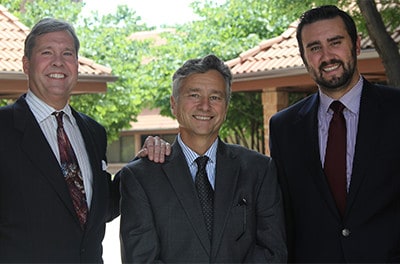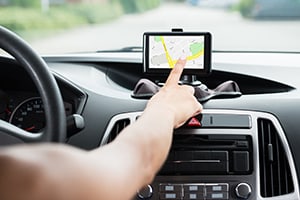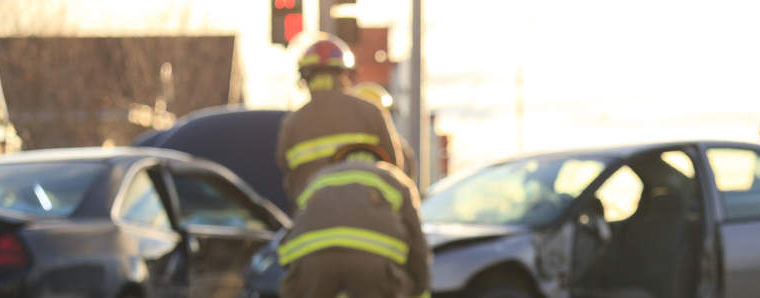Programming a Navigation System While Driving More Dangerous Than Texting According to New Study
Although most of us believe the most dangerous distraction is a cell phone—programming a navigation system while drivingwhether talking or texting—there are a whole gamut of built-in features in new cars which are so distracting, they should not be enabled while the vehicle is moving. Psychology professor David Strayer with the University of Utah has extensively studied built-in car features such as SatNav, radios, MP3 players as well as cell phones and messaging devices.
Not surprisingly, Strayer found that anything which takes a driver’s attention away from the road is a danger to that driver as well as other drivers and passengers. What Strayer concluded—which will likely surprise virtually everyone—is that programming a navigation system while driving is the most distracting task. Second on the list is sending or receiving text messages, and third on the list was a tie between audio entertainment systems and making calls on a cell phone.
Although Texting and Driving is Dangerous, Programming Your Navigation System is Worse
Accident data appears to show that, despite knowing the risks—a good percentage of drivers still text while driving. And, while this is certainly dangerous, with study after study linking fatalities and serious injuries to a texting driver, SatNav is actually more dangerous when the driver uses the device while driving. Strayer noted that while the dearth of technology you now find in vehicles was put there with the very best of intentions, people will almost always find a way to use technology which was simply not anticipated.
As an example, the goal of SatNav—when the driver programs the device before putting the car in “drive”—is to give clear, vocal directions without the driver trying to look at their phone or a paper map. Unfortunately, this is not always the end result. A driver suddenly realizes they need to make a stop along the way, and instead of pulling over to reprogram SatNav, they attempt to push buttons and reprogram while whizzing down the freeway at 75 mph.
Further Reading: 6 Celebrities Who Have Survived Car Crashes
Drivers Asked to Perform Tasks While Driving
During the University of Utah study (conducted for the American Automobile Association Foundation for Traffic Safety), in-vehicle information systems in 30 different 2017 vehicles were exhaustively tested. Participants were asked to perform four different tasks—make a phone call, send a text message, find a radio station, and program a navigations system—using touch screens, voice commands and other interactive technologies.
The study found that some drivers had their eyes, hands and mind off the road for as long as 24 seconds
while attempting to perform some of the tasks. This is a very alarming finding, particularly when the NHTSA findings show that a driver’s risk of a car collision double when his or her eyes are off the road for two seconds. That’s right—two seconds. In some instances, drivers programing a navigation system while driving spend an average of 40 seconds completing the task.
Few Laws Against Programming Your GPS
While more than 15 states currently have bans on handheld cellphones for drivers, there are few laws prohibiting drivers from engaging in other technological tasks, such as programming a GPS device. Researchers at the University of Pittsburgh found that driving while using a cell phone reduces the brain activity associated with driving by more than a third. Further, at least 10 percent of fatal crashes in 2015 were a direct result of driver distraction. The National Safety Council finds that a full one-quarter of vehicle crashes are the result of cell phone use—both texting and talking. There is a new technology in the works which will allow police officers to identify those who are texting and driving. This technology could greatly reduce the number of auto accidents, ultimately saving lives. Until then, drivers must self-regulate their risky driving behaviors, remembering that a text, a phone call, or saving a couple of minutes by not pulling over to reprogram the GPS simply are not worth a life.
Contact Our Experienced Northglenn Personal Injury Lawyers
 If you or someone you love has been injured in a car accident in Broomfield, Northglenn, Westminster, Thornton, or anywhere in Colorado, it is important to contact our experienced personal injury attorneys immediately. At Hull & Zimmerman, P.C., our committed personal injury lawyers are dedicated to the belief that everyone deserves justice. Contact us at (303) 423-1770 or (866) 385-3505.
If you or someone you love has been injured in a car accident in Broomfield, Northglenn, Westminster, Thornton, or anywhere in Colorado, it is important to contact our experienced personal injury attorneys immediately. At Hull & Zimmerman, P.C., our committed personal injury lawyers are dedicated to the belief that everyone deserves justice. Contact us at (303) 423-1770 or (866) 385-3505.


